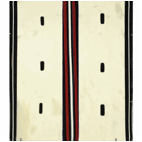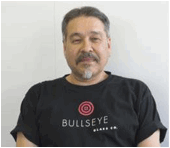
Lawrence Ahvakana


Highway Kupak
Artist: Lawrence Ahvakana
Culture(s): Inupiat About the Artist
In Larry Ahvakana's life and art, distinctions between tradition and innovation, primordial belief and socio-economic needs, enduring rituals and modern realities are unusually blurred. Widely exhibited and collected since the late 1960's, Ahvakana's work shifts between and bridges heritage and novelty. His art renders a way of life entwined with the past. As a Native American, he exists both at the foundation and at a distance from contemporary life and culture. Ahvakana's authenticity and identity as an Inupiat Eskimo is unquestioned, even as he now lives hundreds of miles to the south of where he and his forbears had always dwelled. His ability to flourish as an artist necessitated his departure from Alaska, both to learn the arts he now excels at and to find an audience for what he does. But as surely as he needed to leave Alaska for his art, he must and does return regularly to feed his soul and reconnect with his subject, the traditional Inupiat way of life. Ahvakana grew up within a Native heritage that did not separate artistic creativity from everyday experience. His mother was a "skin-sewer", who created beautiful clothing for members of her community and, once she and her family moved to Anchorage, other Alaskans and tourists. His older sister is the artist Susie Bevins Qimmiqsak. Following study at the influential Institute of American Indian Arts in Santa Fe, a short bewildering stint in New York City attending the Cooper Union School of Art, and graduation from the Rhode Island School of Design in 1972, Ahvakana returned to the Northwest where he has, since 1980, been a "self-employed artist". He has lived near Seattle for fifteen years and spends about a month each summer on his tribal land near Barrow in Beechy Point, Alaska. From the start, even given his sophisticated training and study in the Northeast and Southwest, his unusually large stone carvings captured the quotidian needs and animating rituals of his original Eskimo hunting and fishing community. Foreboding climatic circumstances and a subsistence economy besets his subjects. A compulsively active art-maker, over the last three decades, he has become adept at manipulating a variety of media that include various stones from alabaster to marble, wood, ivory, glass, bronze, and other metals and often huge preliminary drawings to realize his figures and animals. Ahvakana's sculptures of guardian figures, walrus deities, and winter festivals participants are perhaps more real and vital than what they portray. Like his audience, majorities of whom are - like this writer - non-Native, he venerates a culture that in the near future may only remain in the form of art. Working thousands of miles away, Ahvakana vigorously glorifies his traditions to assure they might be inherited. - Patterson Sims, Former Curator, Seattle Art Museum